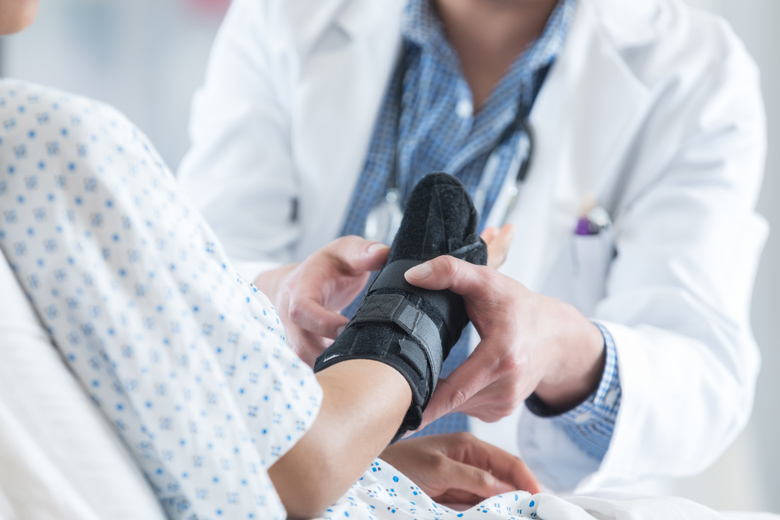
Bone Fracture
Orthopedic Specialists of Seattle (OSS) surgeons have expertise in treating different types of fractures, from sports-related stress fractures to compound fractures caused by a fall or traumatic event.
A fracture is a broken bone. These types of injuries occur when there is a physical force exerted on the bone. Broken bones are common during childhood.
Also, as you age, your bones become more stiff and delicate and you are more susceptible to fractures. There are several types of fractures, but the main categories are displaced, non-displaced, open, and closed.
The Four Main Categories of Bone Fracture
Displaced Fracture
A displaced fracture occurs when the bone cracks into two or more portions and moves so that the bone ends do not line up correctly.
Open Fracture
With an open fracture, the bone breaks through the skin.
Non-Displaced Fracture
With a non-displaced fracture, the bone breaks either part or all of the way through but does not move out of proper position.
Closed Fracture
A closed fracture occurs when the bone breaks but does not puncture the skin and result in a wound.
Types of Bone Fracture
The severity of a fracture depends on the force that caused the injury. If the bone’s breaking point is only slightly exceeded, the bone may crack rather than completely break.
If the force is severe, such as in a motor vehicle accident, the bone may shatter. Bones are rigid but they do have the ability to slightly bend or ‘give.’
Greenstick Fracture
A greenstick fracture is an incomplete break where the bone is bent. This type of injury is seen most often in children.
Transverse Fracture
With a transverse fracture, the break is at a right angle to the bone’s axis.
Oblique Fracture
An oblique fracture is a break with a curved or sloped pattern.
Comminuted Fracture
With a comminuted fracture, the bone fragments into several pieces.
Impacted Fracture
An impacted fracture, also called a buckle fracture, is a break where the ends are driven into each other. This is often seen with children’s arm fractures.
Symptoms of Bone Fracture
Most fractures are very painful and lead to immobility. Some other symptoms include bruising, swelling, and deformity.
Treatment of Fractures
The main goal of fracture treatment involves the broken pieces being put back into proper position and prevented from going out of place while healing. If the orthopedic specialist must realign the broken pieces, this is called ‘reduction.’
Broken bones heal from new bone being formed around the edges of the broken segments. Surgery is often required to treat a fracture. This will depend on the severity of the injury. Other types of treatment include:
Cast Immobilization
The doctor will use a plaster or fiberglass cast to immobilize the broken bone. This is done to protect the area while it heals.
Functional Cast or Brace
This type of device allows limited movement of the nearby joints.
Traction
The orthopedic specialist uses traction to align a bone or bones with a steady, gentle pulling action.
External Fixation
External fixation involves surgery. The orthopedic specialist places metal pins or screws into the broken bone pieces and connects them to a metal bar outside the skin. This is done to stabilize the bones and hold them in alignment while they heal. The metal hardware is removed once the bones heal.
Open Reduction and Internal Fixation
This operation is done to realign the bone pieces. The fragments are first ‘reduced’ or repositioned into normal position, and then they are held together with special screws or by attaching metal plates to the bone surface. It may be necessary for the surgeon to insert rods down through the marrow space in the center of the bone.
The type of treatment varies based on the type of injury, but our goal is to help patients return to their normal activities as soon as possible.
Meet Our Bone Fracture Specialists
Relevant Fracture Articles
The physicians at OSS have a breadth of knowledge in orthopedic surgical procedures or chronic injuries and share their expertise it with the community at large. Article topics include:
